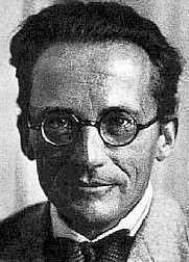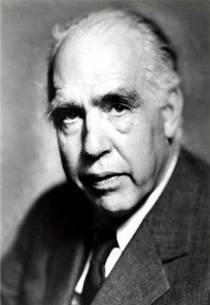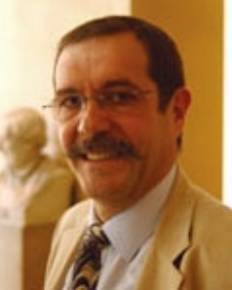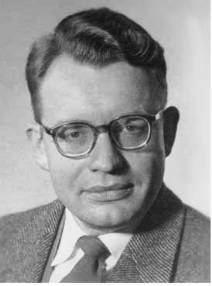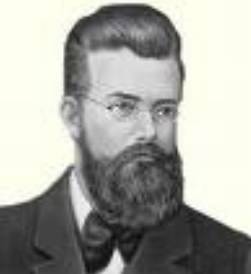|
COPENHAGEN INTERPRETATION OF QUANTUM PHYSICS AS NEW MYTH. L.Regelson
|
||||||||||||||||||||||||
|
It would be illusory to believe, that there are human thought areas, completely free from 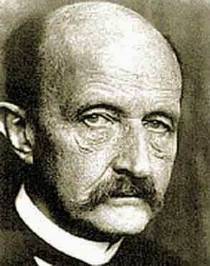 mythology. That is true also for a science. Because, even if they name mythology as axiomatics, the essence does not vary: set of unproved representations and notions determines the basis of science paradigm, defines its subject, its activity purposes and methods of the decision of problems. Without such aprioristic borders any regular thinking would be impossible. The history of a birth of modern quantum physics was extremely dramatic. Experimental paradoxes had appeared so difficult, that any attempts of their physical decision seemed hopeless deal, and the way out had been found in revision of basic representations of physics in whole. What had been sacrificed was formerly considered as the most valuable and immutable principle - the belief that the physics allows, with the certain degree of approximation, to describe the objective reality, which is independent of the observer. This representation is a religious nerve of the exact science. The true adherents simply loses any interest in science without this belief. However this basic myth which generates the specific inspiration of scientific activity, has been cast aside by the group of young physicists who have gathered themselves around the venerable Niels Bor (who was living in Copenhagen), like apostles of a new religion around the famous guru This religion is known as copenhagen interpretation of quantum mechanics.
mythology. That is true also for a science. Because, even if they name mythology as axiomatics, the essence does not vary: set of unproved representations and notions determines the basis of science paradigm, defines its subject, its activity purposes and methods of the decision of problems. Without such aprioristic borders any regular thinking would be impossible. The history of a birth of modern quantum physics was extremely dramatic. Experimental paradoxes had appeared so difficult, that any attempts of their physical decision seemed hopeless deal, and the way out had been found in revision of basic representations of physics in whole. What had been sacrificed was formerly considered as the most valuable and immutable principle - the belief that the physics allows, with the certain degree of approximation, to describe the objective reality, which is independent of the observer. This representation is a religious nerve of the exact science. The true adherents simply loses any interest in science without this belief. However this basic myth which generates the specific inspiration of scientific activity, has been cast aside by the group of young physicists who have gathered themselves around the venerable Niels Bor (who was living in Copenhagen), like apostles of a new religion around the famous guru This religion is known as copenhagen interpretation of quantum mechanics.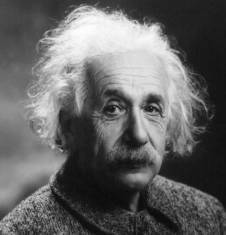
By common efforts they have elaborated a new axiomatic base of physics. The intellectual structure, which they named "the state vector", became the kern of new paradigm.The notion of physical reality was replaced by this structure. In this connection the self-evident notions of goal and even of object of science were revised. The former paradigm was branded as "naive realism" or as the partiality towards the "visual picture of world". The new philosophy (or rather mythology) of physics, which soon reached the complete domination, had met the active negotiationon part of by those who had laid the theoretical basics of quantum physics. It seemed simply absurdly to suspect such trail-blazers as Max Planck, Albert Einstein, Ervin Shroedinger and Louis De-Broglie in the inflexibility, conservatism and prejudice of thought. However just that was verdict which was pronounced by the victorious 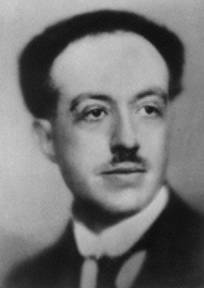 "copenhagen" school, which had suggested the copenhagen interpretation of quantum theory.
"copenhagen" school, which had suggested the copenhagen interpretation of quantum theory.Wolfgang Pauli has asserted (quotation from memory): "What is dreamed by these gentry, are not only wrong dreams - but also ugly dreams. I am convinced, the development of physics in nearest centuries will not go not along that way, on which they want to turn it back". A physicist can not express the greater insult than to name the ideas which belong to other physicist - "unbeautiful" or "ugly". And that was said about Albert Einstein, who believed: "The beauty is the main thing in physics". However he was just as sharp and categorical as his opponents. So, he wrote to Ervin Shroedinger: "What these lads are doing, it in the best case is the engineer's physics. To tell the truth, it is not the physics at all". It is the murderous brand, which is set by Albert Einstein on the copenhagen interpretation of quantum mechanics: "non-physics". Ervin Shroedinger, in his turn, wrote that conception, which rejected the notion of reality independent of observer, deprived the science of its heuristic force. Therefore the science became predetermined to some kind of "intellectual glaucoma". By the way, hodiernal inability of theoretic thought to manage with the avalanche of experimental facts to a considerable extent confirm this diagnosis. Max Born has drawn far going parallel, when he said: "Our polemics may not be named only scientific discussion. Rather it was resembling religious disputes of the Reformation times. Hence there are very few hopes on conciliation." "The mighty handful" was resisting heroically but suffered the crushing defeat. Conceptions of the new school on the whole historical epoch became the some kind of "faith symbol", the compulsory condition of belonging to "genuine" science. Any attempt to subject it to the doubt immediately put the author outside of scientific association. Lev Landau was explaining to us on his lectures: there are three kinds of physics - experimental, theoretical and ... "pathological". The last kind of it - which is discussing similar topics. However for the last 20 years the situation gradually begins to change . M. Scully and M. Zubairy in their remarkable monography "Quantum Optics" (1997) had sumed up the main attempts (but not all) "to dig the mine under indestructible fortress of Copenhagen philosophy" (it's my expression). Let me cite the Jaynes opinion (1980), which the authors of this book evidently share: "It is quite clear, the contemporary quantum physics not only don't make any use, but even dare not to mention the notion of 'real physical situation'. The defenders of theory are saying this notion is philosophical naive and it is the return to obsolete methods of thinking; the realizing of this fact is ostensibly the new deep knowledge about nature of science. I am saying that this theory display the utter irrationality, that somewhere in this theory is lost the distinction between the reality and our knowledge about this reality. The result have traits more of medieval black magic than of the science. I had hoped that quantum optics with its enormous new technological possibilities is able to give the experimental key for solution of these contradictions." It is evident that views which I am setting forth in this article, coincide in principle with Jaynes ones (also Scully and Zubairy). Physicists-experimentators feel more and more the deficiency of the axiomatic base which deprive them of realistic visual presentation of the physical reality with which they have deal every day in their laboratories. But also the scientists with theoretical mentality are less and less satisfied by the fundamental physical views, which are formally consistent but have the deep contradictions on the intuitive level. "The state vector" - it is ugly intellectual centaur which in one half "consist" of investigation object and in other half - of our knowledge about this object. As before, any attempt to return to realistic views encounters the contradiction not only intellectual but experimental: real physical object can not be simultaneously spacial localized and unlocalized - how it follows (or seems to follow) from observations of separate photons or electrons. Up to now the quantum physics mentality kept itself in borders of pure positivism, according to which there are not anything in world besides systematically arranged registrations of experimental data. The question what exist beyond or in base of these observations, was considered as unlawful and indecorous. But now we are seeing how the genuine mysticism invades, or at least begins to be legitimized in academic science. What is known long ago is a buddhistic interpretation of quantum physics , in particularly the works of F.Capra, which however were perceived rather as some curious views lying outside of science. But now the serious attempts are launched to create one more new mythology which would be based completely on the notion of "state vector". The essence of all these attempts is very simple in their idea: to endue the state vector by ontology status. Hitherto the psycho-physical duality was attributed only to our way of describing of "unknowable" reality, but now such a duality is claimed to be the property of reality as such. Most noticeable in this plane are the stream of publications on topic of so called "everett worlds", which are existing in parallel, herewith the choice between them being performed not only by the consciousness of observer, but by the quantum object itself. Indisputable leader of this trend in Russia became Micael Mensky, after his bright publications in USPEKHI FIZICHESKIKH NAUK (Successes of Physical Sciences) and VOPROSY FILOSOFII (Questions of Phylosophy). It is of interest to mention, that it's me who studied with him together in one student group; already then we fervently debated these topics. It is of interest to mention, that it's me who studied with him together in one student group; already then we fervently debated these topics. Academician Ginsburg, the chief redactor of UFN, ahead of Mensky article placed the redaction foreword: he set forth traditional positivism views and expressed personal perplexity about the problem positing by M.Mensky. Herewith he was justifying this unusual publication by undoubted scientific competence of author and by great interest of readers to these problems. Soon ibidem has appeared the whole collection of responses, authors of which competed in inventions of more and more fantastic pictures of world, "explaining" the quantum paradoxes. Certainly it didn't manage without reasonings about "volition freedom of electron" and even that the every elementary particle is independent "civilization". And all this is published not in some popular journal like "Technic - to Youth", but in "Successes of Physical Sciences"! One aspect of the discussion is of special interest by its novelty and strangeness. The point is that the group of "orthodox physicists" had taken an active part in the discussion (although, thank God, till now not in UFN). I name them so not because of their personal faith (what of it that the scientist have such or other faith outside of his profession), but because they attempt to link the religious views directly with the quantum picture of world. Of course the attempts to overcome painful laceration between scientific and religious pictures of world should only be greeted, but the question is to what extent these attempts are successful and realistic. I will call only three names: Victor Trostnikov, Aleksandr Moscovsky and Eduard Tainov. The first of them suggest no more and no less than to consider the Creator, on the analogy of "observer" in Copenhagen treatment, in quality of global "Observer of Universe", which exists only owing to this "observation act". That just as the quantum-mechanic object ("the state vector") emerges only in "observation act" by physicist-experimentator, and does not exist outside this act. Indeed, as the state vector is on half composed of our knowledge about this object, consequently if there is not any knowledge - it means there is no object. Trostnicov position has not any relation to the science itself - and apparently he has not any pretension to that, but it is unacceptable also with pure religious point of view. On the one hand, Trostnikov actually agreed with one of the concepts of Islamic Theology, according to which the world can not exist even one moment without direct support of the Creator. There is even more strong assertion: the world every moment disappears and is created anew by Allah. Such a faith completely annihilate autonomy and independence of world in front of Creator - and therefore no relations can arise between God and world. In fact, it is pantheistic belief that the whole world is simply "part" of the Creator. However the essence of the biblical tenet of the Creation, it is that God has created a world in which can emerge the man as a being who would able to free response to the divine love. It can be said that "anthropical principle" had been established in the Biblical picture of world long before it was formulated in physics. If a man does not have a separate existense from God, then there would be no ontological support for the man autonomy and freedom. On the other hand, Trostnikov theologumen represents God as a cold "Observer", Who keeps Himself away from world : the parallel with physicist - experimenter simply insults religious feeling. Biblical faith is that God created the world and loves this world, id est first and foremost He protects its autonomy from Himself. There is a great idea in the Jewish theology: the Creator "had reduced (or shrunk)" Himself - to give the place for the world. To this must be added the idea of Divine Providence, according to which the Creator finely, it can be said, "delicately" preserves the world and the man from the deadly danger. In the crucial moments He gives the impulses to development - slight, but precisely directed. It is most like the relationship to loved child of his parent, which seeks to raise his as an independent, responsible individual, and for this goal he increasingly expands his freedom and autonomy. Alexander Moskovsky, compared with Trostnikov, offers another view. He is trying to explain the effects of "distant-action", for example, instantaneous reduction of the state vector by an act of measurement, as a manifestation of activity of platonic "eidolons" ("eidos" in Greek), which Moskovsky is understanding as the world preimages created by God. Let me recall again that reduction or sharp compression of the wave function, which represents a state vector in the spatial coordinates, occurs, according to the Copenhagen conception, because the act of measuring results in a change in our knowledge about this state. As example, prior to the registration of the photon, which is coming from distant galaxy, the front of the wave function has size in millions of light years, but after registration - almost instantly this front is reducing to the size of a single grain of photoplate. The point is that prior to the registration, we did not know exactly in which place of this giant front we can find the photon: therefore the photon wave function, which determines the probability of detecting the photon in some or another place, had "occupied" such a vast volume. But once we know where he is - the size of the new photon wave function now depends only on the accuracy with which we have defined its position. Unlike Trostnikov in Alexander Moskovsky conception not God Himself actualizes the direct management of motion of material objects, but that is doing by some structures which are existing outside of space and time and constituting the world of ideas (eidolons). From this point of view, the existence of God is not necessary at all and ideas themselves may be realized as the eternal and uncreated entities, how evidently Plato believed. This conception is developed in detail by Eduard Taynov, physicist and philosopher, venerator and follower of Nicholas Lossky. In his book "Basics of Orthodox metaphysics" he with logical coherence and philosophical clarity formulated the notion of omnipresent spiritual essences, created by God - the same ideas or "eidolons", which he determines as "intelligentsias". He also claimed to deduce the necessity of the existence of God (namely the God as Trinity) from the specific requirements of the "substantiality", which he understood in peculiar way. The originality of Taynov conception - that he considers the "intelligentsias" as a real ontological basis of the physical "state vector". If to translate that all from philosophical into theological language, it means the following. To every state vector its own special angel corresponds, having his own individuality and free will. But this will is subjected to God laws, which in such way become the laws of nature, i.e. the laws directly managing the matter motion. Edward Taynov metaphysics, which he names "orthodox" is a development and concretizing of Nicholas Lossky views about invisible "substantial doers". These ones are inherent to each subject perceived by us and, most surprisingly, to each quality of this subject. Thus, Nikolai Lossky conformed, literally and seriously, that the color of the subject is one substantial doer, the smell is another one, density - third one, form - fourth and so on. All of this reminds ironic description of st. Augustine: dozens of gods, ghosts or geniuses, according to Roman pagan beliefs, were served during the first marital night. Everyone was fulfilling his own narrowly specialized function: without them, everything would resolutely fail. So we have here deal rather with basics of pagan metaphysics, but it is not biblical and certainly not orthodox. However, the paganism also captures some aspects of reality created, but comprehends them in a very distorted way. I shall refrain from judgments about the marital night, but I firmly believe, that electron or photon, and the more electronic or electromagnetic field, absolutely has not any need in such services from any unvisible entities. Physical laws are not something imposed from the outside on the matter, but are inherent since matter creation. And this is causing an intellectual awe the wisdom of Creator, Who from a few simple elements was able to make such an incredibly complex world, capable of self-development. The actual difficulties and problems that arise from quantum phenomena are purely physical and should be resolved through better and deeper scientific understanding, without any desertion to an epistemology or mystical speculations. I am not arguing that there are no mystical phenomena: there is God , there are the divine energies (actions in Greek), there are, finally, many angels, with their multiple roles. However, I religiously believe that the material world has the widest autonomy from its Creator and in the vast majority of manifestations, this world manages without direct divine or angelic support. The greatness of the Creator is best reflected in the fact that He created such autonomic (from Himself) world, capable of infinite selfdevelopment and selfcomplication. And if He yet sometimes, in the critical turning points intervenes in world selfevolution, but these interventions are quite rare and are extremely thin, it can be said - of very "delicate" sort. Modern cosmology of Big Explosion identified in the development of the universe the moments of bifurcation, the unstable equilibrium situations, when a negligible influence prejudges one of fundamentally different trends for its future development. Namely in such moments can occur the purposeful Creator interventions - directly by His energies or with help of previously created spiritual beings - angels. The same features of the "least necessary intervention" (aptly termed Strugatski) have divine influences on biological evolution. So, if to carry through a small but purposeful mutation just in one single gene - it is enough to appearing on the planet a new kind of plant or animal. A further by the way of the natural or artificial selection can origin many varieties adapted to the conditions of existence or to the demands of people to them. How many sorts of dogs have been bred by man, but the biological species remains only one! The view that an "angel", "intelligentsia", "idea - eidolon" or "substantial doer" directly manage behaviour of the material object (particles or quantum system), it seems religiously primitive, intellectually rough and emotionally boring picture (this is, of course, to some extent subjective assessment). Matter is matter, psyche is psyche, and there are subtle and varied interaction between these two types of divine creations. But where there is no separation - there is no relationship. And the deeper mutual autonomy, the more significant and more unique these relations and interactions are. But what to do with quantum paradoxes? Before discussing purely scientific theories or experiments, the real problems must be carefully separated from imaginary ones: but in quantum physics all these are jumbled together. So, the famous "Bell inequality" or "Bell theorem" accept as axiom namely that, what is required to be tested and proved. The proof of this theorem is based on the sumption that there is such thing as "photon", i.e. although very unusual one, but yet "particle". The proof of this theorem is based on the sumption that there is such thing as "photon", i.e. although very unusual one, but yet "particle". Therefore, all the probabilities which are connected with a solitary "photon", are normalized to unit, and from this ensues the entire Bell theorem. But the very existence of the photon - this is a hypothesis that should be proved or disproved. There are no photon, there are no Bell theorem and problems related with it. Alan Aspect in 1986 has made only one (as I know) experiment, which had deal not with correlations of polarizations and Bell inequalities, but it was a genuine attempt to find out, whether electromagnetic radiation consists from localized "particles" or it is a field, continuous and extended in space. He was sending solitary pulses of radiation ("photons") through semitransparent mirror, and using the coincide counter had possibility to register the simultaneous reaction of two detectors. If the atom emits electromagnetic wave pulse, these coincidences must take place; but if localized particles (photons)are emited, such coincidences are not possible. Although the photon can be found in any place where the wave function is nonzero, but the same photon can never be registered in two places at once. The results, which Alan Aspect has received, were in favour of the particles. But physicists in such important matters never was satisfied by a single experiment: the tests in several independent laboratories were required obligatory. Surprisingly (and on the other hand, it is just not surprising) that in this case the scientific community so radically altered its habits and rules. The results of a single experiment were accepted as ultimate and decisive. Meantime, in the technical excellent performed Alan Aspect experiment was admitted at least one fundamental methodological error, which was enough to prejudge the outcome of the experience: as a result of this error, probabilities of coincidences (if there would be) became much lower than the noise level. So nothing really has not been proved, and the all is still just beginning. In principle, all events related to the "photon" and "electron" can be explained through the conception of field: without assuming of any localized "particles". In this case, we will compelled to attribute all the discreteness, which is observed in experiments - not to the field itself, but to its interaction with the detector atoms. It was Max Planck, who was explaining this situation just in such a way. The substance consists of a nucleuses (indeed localized structures), and electron fields, which, because of its wave nature and type of interaction with electromagnetic field (Schroedinger equation), has affinity to form the discrete states, for example, in atom or crystal. Therefore (and only therefore ), electron field interaction with nuclei, as well as with external electromagnetic radiation, acquires its discrete, particular quantum features. Here, however, there are serious "uncertainties", particularly with energy: this was just the same difficulty from which Bor physics school had retreated. Here, scientific drama of the Niels Bohr himself. In their famous 1924 work Bor, Kramers and Sleter come close to the idea of "vacuum field", which seemed giving the hope to untangle these knots. It is now clear that the vacuum field, which from inertia continues to be called "virtual", in fact, is experimentally observable reality. Already the so-called "spontaneous" radiation can not be explained in another way except the influence of vacuum field on the electron blanket of atom. If someone is not convinced by this, the Casimir experiments showed a direct force effect of the vacuum field, similar to pressure of light. But in 1924, this great conjecture seemed too exotic, and, not finding intellectual resources for the development this idea of physical vacuum, Nils Bor decided to refuse from the "classical" physics, or, in fact, from the physics as such. Because the intellectual building, which he had built with his disciples, may be named according to Einstein definition, simply as "non-physics". This is such "quantum non-physics." We may draw the parallel in the science history with current situation: it was the era of complete predomination of the so-called "energetics" of Wilhelm Ostvald, who was one of the first Nobel laureats, founder of the popular series: "The Classics of Exact Sciences". According to these views, "atom" was considered merely as abstract, purely logical notion, which expressed in a convenient form the weight ratio of elements in chemical reactions. At these times the Ludwig Boltzmann conception about atoms as real particles, was perceived as primitive and rough "realism", unworthy the attention of serious scientists. And all this was despite the fact that the Boltzman through these ideas had been able to explain quantitatively such phenomena as pressure of gases and their thermal capacity and also gave the convincing proof to the second law of thermodynamics. At long last, unrecognized and persecuted, Boltzman became seriously ill and had committed suicide. He did not have possibility to read the Einstein article about Smoluhovsky experiments with the brown movement of suspended particles. Here Einstein has found clear evidence of the reality of atoms and molecules, and even gave assessment of their masses . And soon Rutherford in his experiments has decisively confirmed atomic structure of matter. And who now, except experts on the history of physics, remembers miserable Ostvald with his "energetics"? Doing paraphrase of a "judgement", pronounced by Pauli against the "mighty handful" which had not accepted the Bor mythology, I will express my firm belief: the development of physics will not go along the way of the copenhagen interpretation of quantum mechanics, which will ever be remembered in physics history books as a curious and in its grandiose size - unique misunderstanding. And still more misunderstanding: the attempts to build a mystical or religious picture of a world on the basis of transitory and, ultimately, erroneous scientific-mythical theory, just as in the Middle Ages tried to build a picture of Divine world on the basis of Ptolemaic geocentric model. Moscow 2007 5th Solvay Conference, 1927
The central topic: Bohr-Einstein debates A. Piccard, E. Henriot, P. Ehrenfest, Ed. Herzen, Th. De Donder, E. Schrödinger, J.E. Verschaffelt, W. Pauli, W. Heisenberg, R.H. Fowler, L. Brillouin; P. Debye, M. Knudsen, W.L. Bragg, H.A. Kramers, P.A.M. Dirac, A.H. Compton, L. de Broglie, M. Born, N. Bohr; I. Langmuir, M. Planck, M. Curie, H.A. Lorentz, A. Einstein, P. Langevin, Ch. E. Guye, C.T.R. Wilson, O.W. Richardson ----------------------------------------------------------------------------------------------------------- |
||||||||||||||||||||||||
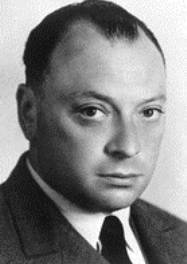
|
||||||||||||||||||||||||
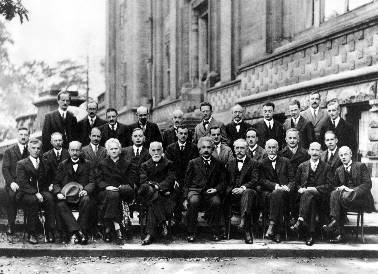
|
||||||||||||||||||||||||
|
See large-scale foto in the end of article
|
||||||||||||||||||||||||
|
5th Solvay Conference, 1927
The central topic: Bohr-Einstein debates A. Piccard, E. Henriot, P. Ehrenfest, Ed. Herzen, Th. De Donder, E. Schrödinger, J.E. Verschaffelt, W. Pauli, W. Heisenberg, R.H. Fowler, L. Brillouin; P. Debye, M. Knudsen, W.L. Bragg, H.A. Kramers, P.A.M. Dirac, A.H. Compton, L. de Broglie, M. Born, N. Bohr; I. Langmuir, M. Planck, M. Curie, H.A. Lorentz, A. Einstein, P. Langevin, Ch. E. Guye, C.T.R. Wilson, O.W. Richardson |
||||||||||||||||||||||||
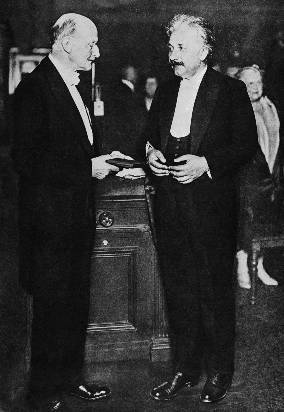
|
||||||||||||||||||||||||
|
Planck giving the Planck Medal to Einstein because of light quanta. Berlin, 1928.
|
||||||||||||||||||||||||


